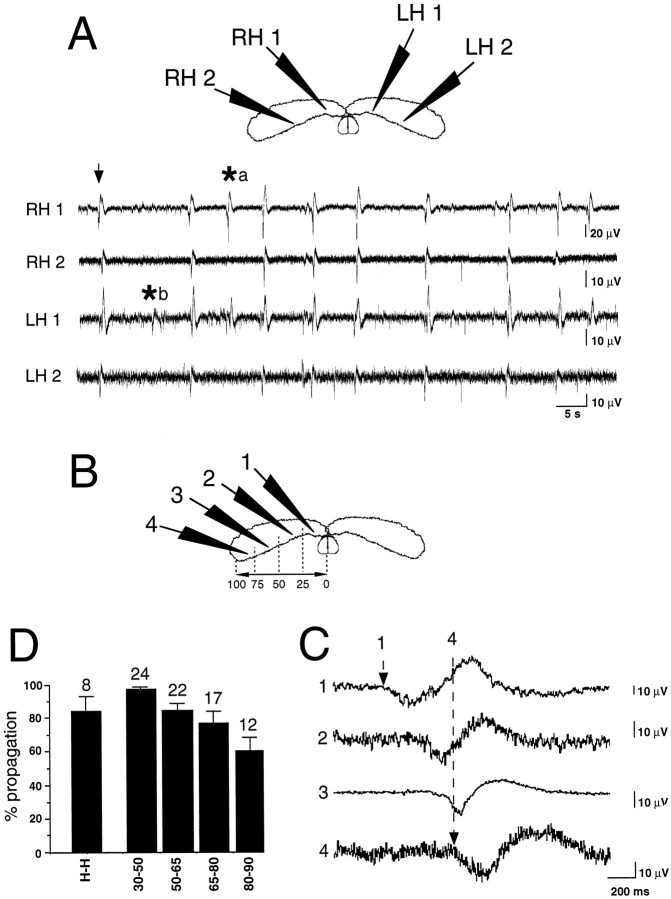Fig. 3.
Spontaneous GDPs propagate synchronously in both hippocampi from septal to temporal poles. Multiple extracellular field recordings from the CA3 region of the intact bilateral septohippocampal complex. A, Simultaneous extracellular field recordings at the four recording sites indicated in the top scheme.RH, right hippocampus; LH, left hippocampus. Note that most GDPs (field deflections,arrow) appeared quite simultaneously in the four recording sites, with few exceptions of GDPs that appeared in septal poles but not in temporal poles (asterisk a) or appeared locally in one hippocampal site but did not propagate (asterisk b). B–D, Simultaneous extracellular field recordings at the four recording sites indicated in the scheme (B). Corresponding electrophysiological traces (1–4) showing propagation of a GDP at a large time scale. Note that GDPs appeared first in the most septal recording site (1, dashed arrow) and propagated toward the most temporal recording site (4,dashed arrow). As illustrated in A, not all GDPs propagated to the temporal extremity or to the contralateral hippocampus. D, Summary of the percentage of GDP propagation from one hippocampus to its contralateral counterpart (H-H) and from the septal pole to the other recording sites in the same hippocampus (x-axis values correspond to normalized septotemporal distances as represented inB). Numbers above each barindicate the corresponding number of averaged experiments. Note that a significant percentage of GDPs initiated in the septal pole faded away before reaching the temporal extremity.

